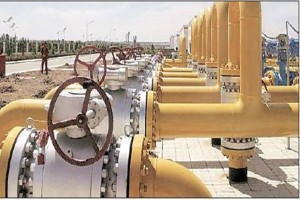Under a special package for deep/ultra-deep, high-pressure/high-temperature (HP/HT) fields announced in March 2016, the supplies therefrom are allowed ‘premium’ price, linked to the prices of alternate fuels, including fuel oil, naphtha, and imported liquefied natural gas (LNG).
The government has initiated discussions to ‘lift price restrictions on domestically produced natural gas’. However, it intends to do it ‘gradually’. It wants to continue with regulated gas pricing for at least three more years. However, in the interregnum, producers will be given freedom to sell a portion of the total output under ‘negotiated pricing deals’ with their customers. Will it help?
Under the guidelines in effect since November 1, 2014, for all domestic supplies from fields given under the new exploration and licensing policy (NELP), as also blocks given on ‘nomination’ to Oil Natural Gas Corporation (ONGC) and Oil India Limited (OIL) under pre-NELP, the price—call it normal price—is a weighted average of prices at four international locations in USA, the UK, Canada, and Russia. Revised every six months in a financial year, the current price, from October 1, 2019, is $3.23 per million Btu (British thermal unit).
Under a special package for deep/ultra-deep, high-pressure/high-temperature (HP/HT) fields announced in March 2016, the supplies therefrom are allowed ‘premium’ price, linked to the prices of alternate fuels, including fuel oil, naphtha, and imported liquefied natural gas (LNG). The current price determined on this basis is $8.43 per million Btu, which is more than double the normal price.
A third pricing mechanism exists for fields given under the Open Acreage Licensing Policy (OALP)—the policy was introduced in July 2017. The supplies from these fields—conventional gas as well as unconventional hydrocarbons, viz shale gas, coal bed methane (CBM)—are eligible for market-based pricing, which also applies to unconventional hydrocarbons from the fields awarded under NELP.
ONGC and OIL have 149 marginal fields, which account for a mere 5% of their total output. The government intends to auction them to private entities. After transfer, the new owners will get complete freedom of marketing and pricing of supplies from these fields.
In short, except for fields under NELP, and ‘nomination’ blocks under pre-NELP, supplies from all others are already eligible for significantly higher price—either based on alternative fuels or market-determined price. Now, the intent is to allow higher market-based price for the former as well. This was not unexpected.
In 2014, the government was under pressure to go for market-based pricing. This was rejected, arguing that domestic supply being far short of demand, this would result in high price, which users, particularly fertiliser industry, power, and city gas—they account for nearly 3/4th of total gas use—can’t afford. In fertilisers, bulk of the gas is used for producing urea, whose maximum retail price (MRP) is controlled at a low level to make it affordable to farmers. The excess cost of supply is reimbursed as subsidy to manufacturers. If, gas is priced high, with MRP remaining unchanged, this will result in higher subsidy, which the government wants to avoid.
Likewise, states want to pay less on power subsidy even as they order a big slice of it to be supplied at low tariff—even free—to farmers and poor households, unrelated to cost.
These overarching considerations weighed heavily on the ruling dispensation when it decided to stick to price regulation. For the same reason, it exercises control over the allocation of gas. Of the total supply, 31% is given to power, 24% to fertilisers, and 22% is allotted for city gas. Since then, nothing has changed as to warrant a move towards market-based pricing. Neither has the government has done away with control on urea MRP nor do states have any plans to shed supply of free power to key constituents. Hence, the status quo for three years.
For now, what does it want to achieve by letting operators sell a portion of supplies at market price? Is it to foster competition? Will it to help price discovery? Will it galvanise users to pick up the right signals? Will it help attract investment and boost production? Alas, the answer to all these questions is negative.
A mere offer of a small quantity for trading is of no help in fostering competition. Of what use will price discovered on the gas exchange be when almost all supplies and prices are regulated? Regarding users (read: fertiliser and power industries), they will end up paying more for gas in turn, leading to higher subsidy—taking from one hand and giving back from the other. As for increasing production, this is not automatically ensured by higher price (KG-D6 operated by Reliance Industries (RIL) got a good price $4.2 per million Btu, yet, it is currently producing a fraction of what it committed).
What, then, is the way forward? The government should dismantle all controls on gas supply and pricing—there is no such thing as ‘gradual decontrol’—deregulate its imports, and hive off infrastructure for import, handling, and transportation (today, most of it is with PSUs) to an independent entity, which should make it accessible to all players on ‘common carrier’ principle in an ‘equitable’ and ‘non-discriminatory’ manner at tariff determined vide competitive bidding.
This will create an ecosystem in which there will be adequate availability (domestic plus import) of gas to meet the increasing demand at ‘uniform’ and ‘affordable’ price, unlike the flawed present architecture, where at least half a dozen prices depend on the source of supply and hydrocarbon type. This will also provide a ‘stable’ and ‘predictable’ policy environment, conducive to attracting investment.
However, for this to happen, Modi should first lift price control on fertilisers and goad states to follow suit in case of power, and use direct benefit transfer to help the poor. Sans this, the pressure to keep gas price low will continue, thereby blocking the road leading to deregulation of gas.
Author is a policy analyst
www.uttamgupta.com. Views are personal
https://www.financialexpress.com/opinion/price-control-the-gas-on-gas-price-deregulation/1791413
https://epaper.financialexpress.com/2460094/Mumbai/December-12-2019#page/8/2
